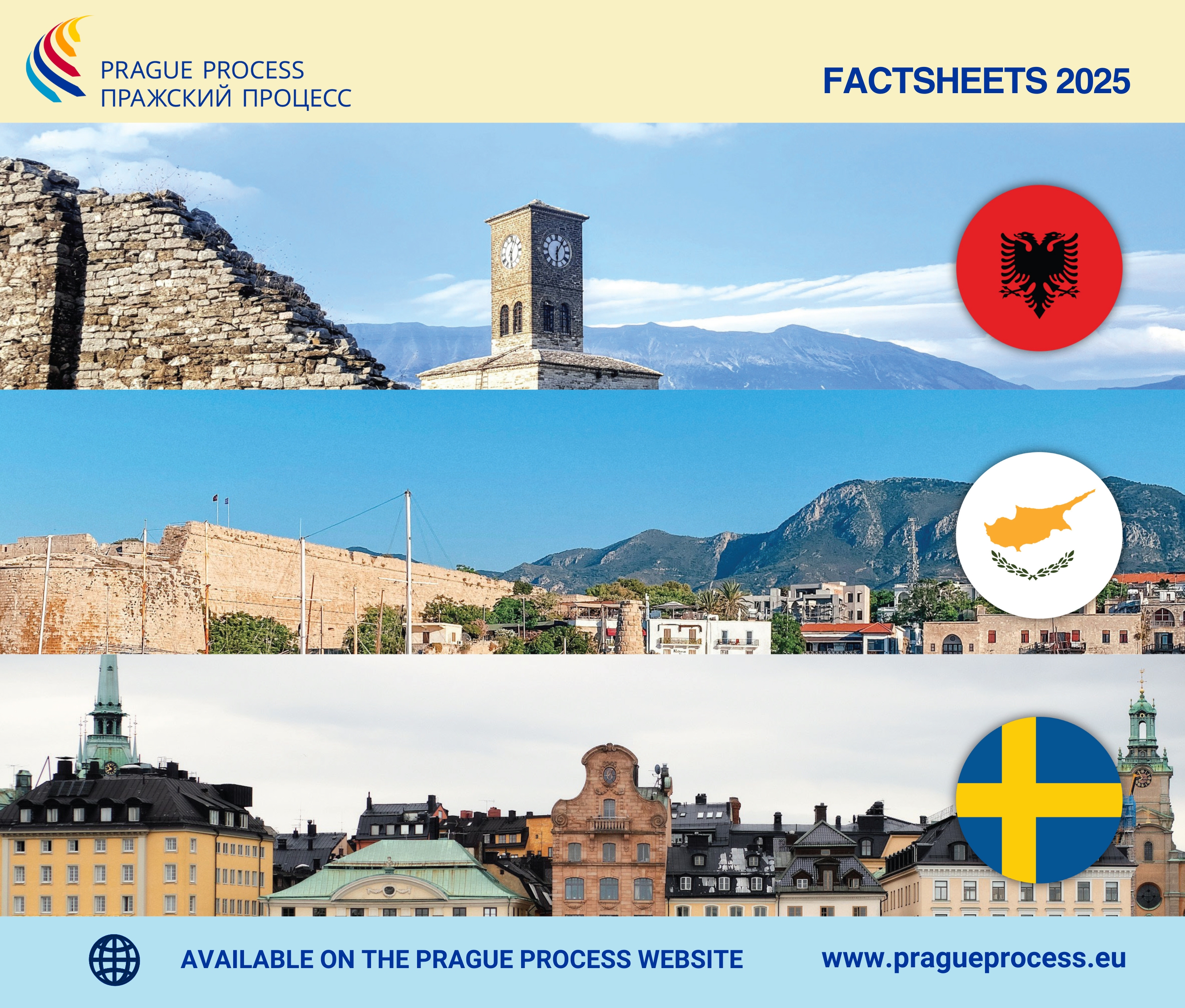We have the pleasure to inform you that the Prague Process has introduced the regular update of the country factsheets, now featuring the latest migration-related trends and policy developments in Albania, Cyprus and Sweden.
Here are a couple of highlights that offer a glimpse into recent developments. Explore the full version of the factsheets to review the detailed analysis and data.
Albania: Extensive diaspora and shifting EU migration
- Albania’s diverse diaspora, estimated at 1,216,628 people in 2024 (around 51% of its resident population). The largest communities are found in Southern Europe, particularly in Italy and Greece.
- At the end of 2024, Albanian nationals in the EU held over 839,000 valid residence permits, down from 916,293 permits in 2021. Of these, nearly 50% were issued for family reunification and 29% for employment reasons. Albanian workers mainly work in construction, industry, and transport. In Greece many are employed in agriculture and manufacturing sectors. Germany has become an increasingly attractive destination for Albanian migrant workers, especially in healthcare and IT, thanks to the expanded 2024 Western Balkan Regulation allowing easier labour market access.
- Since 2020, Albania has experienced an increase in immigration. By the end of 2024, 21,940 foreigners held residence permits in the country, up 2.2% from 2023 and 61.2% increase since 2020. Most immigrants came from Kosovo*, Italy, and Türkiye.
Cyprus: Evolving migration dynamics
- Over the past decade, emigration from Cyprus has increased by 71.5%, with the number of emigrants rising from 15,733 in 2015 to 18,598 in 2019, and further up to 26,979 in 2023. Most emigrants are non-Cypriot nationals, whose outflows increased significantly in recent years.
- Despite its contested borders, Cyprus remains a desirable destination country. In 2024, foreigners accounted for 26.9% of the country’s population, with 9.3% coming from the EU and 17.6% coming from non-EU states. According to UN DESA 2024, Cyprus is home to 259,939 foreign nationals, most of whom came from Greece (25,031), Georgia (16,136), Russia (13,731), Syria (12,150), and the Philippines (7,606).
- Asylum applications in Cyprus have declined sharply in recent years. In 2023, 10,662 new asylum applications were submitted – half the number recorded in 2022 – and the figure fell further to 6,750 in 2024. Most 2023 applicants came from Syria (6,199 applications), Nigeria (1,019) and Afghanistan (736).
Sweden: Restrictive migration trends
- In 2024, immigration to Sweden reached 116,197 people, fully recovering after the pandemic, with the largest groups coming from Ukraine, followed by returning Swedes , Indians, Germans, Chinese, Syrians, Poles, and Pakistanis.
- In 2024, Sweden registered 9,645 asylum seekers - mainly from Syria, Afghanistan, Iraq and Iran - a stark drop from the 162,877 recorded in 2015. Recent reforms have tightened asylum and immigration policies introducing stricter rules, cancellation of work permits for rejected asylum seekers, extended re-entry bans and enforcement measures, increased return grants, and broader powers to revoke permits for serious offenders.
- In 2024, 17,015 non-EU nationals were ordered to leave Sweden, up from 16,350 in 2020. The same year, 9,910 non-EU nationals were returned following an order to leave Sweden, up from 7,670 in 2023, representing the third highest number in the EU after France and Germany.
All the factsheets can be accessed through the interactive map here.
The factsheets offer concise and valuable insights in the migration landscape of these countries, providing data from both national and international sources. They also highlight key developments in migration policies and legislation. While the national data is updated by the Secretariat and ICMPD colleagues as well as external experts, the data from international sources is refreshed automatically as it becomes available.
Our Repository contains the latest publications of the Migration Observatory and Training Academy of the Prague Process.
Subscribe to the Prague Process mailing list here in order to keep up to date with the latest developments through our Quarterly Review.

